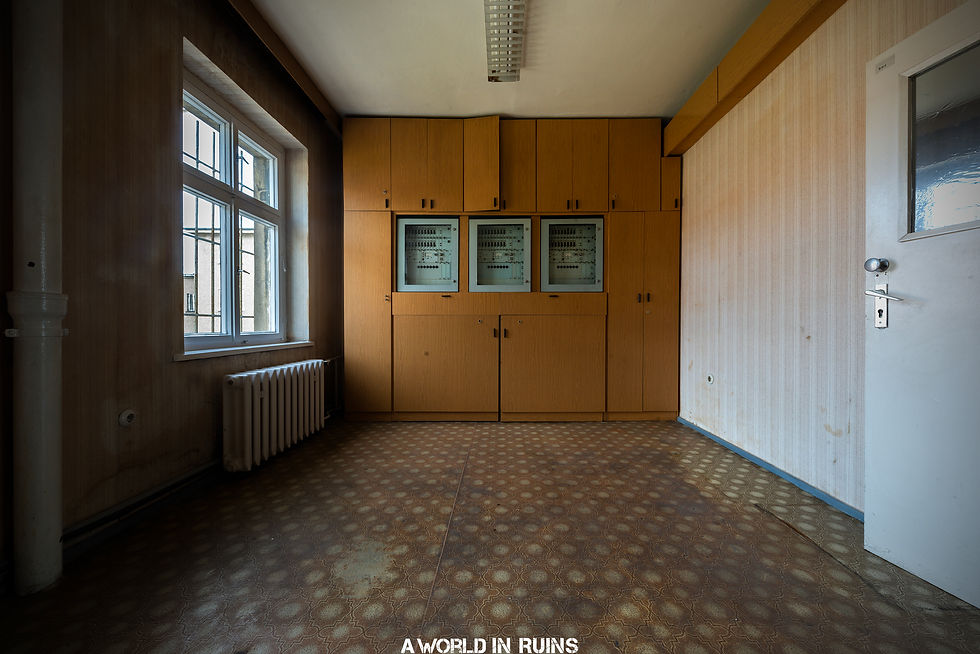

Haftkrankenhaus Hohenschönhausen-
Stasi Prison Hospital, Berlin
2022
































































Along with Becci [Ninja Kitten], we visited the Prison Infirmary section of the Prison complex in April 2022 on our 5 day tour around berlin's abandoned buiuldings. The other parts of the complex were not accessible that day.
HISTORY
In June 1945, at the conclusion of World War II, the Soviet NKVD took over the Hohenschönhausen area of Lichtenberg in Berlin and transformed it into a detainment and transit camp - called Special Camp No. 3.
The camp served as both a prison and transfer point. Over 20,000 people passed through Special Camp No. 3 on their way to other Soviet camps, including Heinrich George who was brought to the Sachsenhausen concentration camp in 1946 where he died shortly afterwards.
Living conditions in the camp were deplorable, with death from malnutrition, disease, or common cold. Although official statistics list 886 deaths at the camp between July 1945 and October 1946, independent estimates put the toll as high as 3,000. Bodies were disposed of in local bomb craters.
The camp was closed and prisoners relocated to other camps in October 1946. After the closing of Special Camp No. 3, the Hohenschönhausen compound served as a Soviet prison during the winter of 1946–1947. The former cafeteria was converted to the underground prison area - "submarine" by prison labour.
The prison was reopened by the East German Ministry of State Security (MfS), also known as the Stasi, in 1951.
The Stasi added a new prison building (using prisoner labour) in the late 1950s. The new building included 200 prison cells and interrogation rooms. After the construction of the Berlin Wall in 1961, the prison was primarily used to house those who wished or attempted to leave East Germany, although political prisoners were also held there. The prison was used until die Wende in 1989 and officially closed on 3 October 1990.
The Grotewohl Express - so named after the GDR's first prime minister was used by the Stasi for transporting prisoners between different sites. The minute 4-person cells inside are at least as oppressive as the ones in the actual prison itself.
The main prison also included a hospital wing, built in the 1950s and expanded in 1972. The hospital treated prisoners from all three Berlin prisons and sometimes from regional Stasi prisons as well. The hospital had up to 28 beds (in cells), an X-ray ward, treatment, operating and vivisection rooms, a morgue, and outdoor exercise cells (called "tiger cages" by prisoners). In 1989, shortly before its closure, the hospital was run by Dr. Herbert Vogel with 28 full-time Stasi staff.


